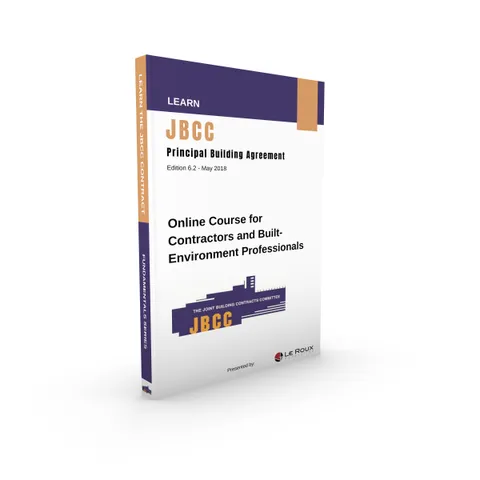What is Retrospective or Prospective analysis?
Good question! It's one of those core fundamentals in forensic delay analysis that is not always well understood or articulated. But don't be intimidated by the words, let me explain it as plainly and uncomplicated as possible by way of 2 examples:
Prospective Approach
Let's say you get an instruction (Variation Order) to install an additional brick-wall on a project. The supplier estimates that it will take 4 weeks to deliver the bricks. You estimate that the installation will take you 1 week. When you model these estimates on your construction schedule it shows a potential delay impact of 5 weeks on your completion date. This is a prospective approach.
The Prospective Approach to delay analysis is essentially looking at a forecast. The method forecasts the potential impact of a delay event based on the duration estimated at the time the event occurs, and how it might affect the contractor's proposed plan. This approach creates a speculative or modelled outcome as it relies heavily on assumptions and estimates rather than hard facts.
Retrospective Approach
On the other hand, in the same example as above, the delay has now ceased. We now have hard facts and know that the supplier actually delivered the bricks within 2 weeks and installation actually took 1 week. The actual impact of the delay on completion was therefore only 3 weeks.
As you can see, the retrospective approach to delay analysis bases its findings on factual evidence. This method involves comparing the original plans against the actual events that unfolded during construction. It presents a more accurate reflection of the delay's impact, deriving its conclusions from fact rather than theory.
The core issue of Prospective vs Retrospective under the JBCC.
Here is the issue. Standard form construction contracts like NEC and JBCC, as well as the guidelines provided by the Society of Construction Law's (SCL) Protocol advocate for prospective methods to ascertain the entitlement and the quantum of EOT claims.
In other words, there is nothing wrong with a prospective approach when parties are dealing with a claim under the NEC or JBCC. From the wording of these contracts, it is acceptable to calculate the impact of a delay on the forecast or based on available data and reasonable estimates.
However, this approach changes when the parties engage in an Arbitration or Adjudication.
Sir Antony Edwards-Stuart's insights in the landmark case of Fluor Ltd vs. Shanghai Zhenhua Heavy Industries Ltd [2016] EWHC 2062 (TCC) offers a meaningful commentary on this issue. He noted:
"There has been an extensive debate about the correct approach to delay analysis. Mr Morgan said, and I would accept, that a prospective analysis – in other words considering the critical path at any particular point in time as viewed by those on the ground at that time – does not necessarily produce the same answer as an analysis carried out retrospectively. The former is the correct approach when considering matters such as the award of an extension of time, but that is not the exercise with which the court is concerned in this case. I agree that some form of retrospective analysis is required."
The Fluor case throws into sharp relief the potential conundrum. Operationally, a principal agent or project manager is required to assess delays prospectively, relying on theoretical forecasts. However, once a dispute surfaces, often long after the event, the parties are compelled to transition to a retrospective method.
This may not seem problematic at first glance. But here's the thing. Often times parties will have a minor dispute on an EOT while the project is ongoing or "in-flight" as it's sometimes referred to. For instance, let's say they disagree on the reasonable allowance of the Contractor's procurement time for materials in its EOT. Contractor estimates 30 days, the principal agent says 10 days are more reasonable.
In Adjudication, the crisp issue of the parties' dispute is turned completely upside down when the method shifts from prospective to retrospective. It could be that when looking at the actuals, the Contractor's plan changed to such an extent that the delay is not even critical anymore from a retrospective standpoint.
However, this was a very valid claim from a contractual perspective, one the Contractor was entitled to obtain if there was agreement on the estimated time.
Accordingly, a valid prospective claim during construction can quickly transform into an invalid retrospective claim in arbitration.
The paradox between operations and legal.
In real-world situations, this creates a paradox. It highlights the different in approach between the operational environment of construction projects and the legal viewpoint of factual evidence.
The SCL protocol's drafters argue that handling potential delay events prospectively during the project offers certain benefits, and it is accepted that this approach is innately theoretical. It allows the parties to act proactively in the fast-paced world of construction and to respond operationally to delay challenges.
However, within a dispute resolution proceeding, Arbitrators don't want to grapple with theoretical and subjective opinions or data. They rely on facts and seek a more concrete approach. The retrospective method necessitates waiting for a delay to occur and cease which are not suitable for an operational environment as it could make it challenging to apply mitigations in a proactive manner.
This reactive strategy can delay decisions on the entitlement to EOTs and the quantum of claims, leading to potential disputes and hindrances in project progression.
It can also lead to situations where principal agents prefer a wait-and-see approach instead of pro-actively administering the terms and provisions of the JBCC.
Summary
In conclusion, the discord between prospective and retrospective methods in delay analysis remains a bit of conundrum in construction dispute resolution. The industry must unearth an approach that fills this gap between project administrators and arbitrators, ensuring a smoother resolution of EOT claims.
Or at least there needs to be some protocol around this issue in terms of dispute resolution.
Perhaps, the future of construction dispute resolution rests at the intersection of these two perspectives.
Until we reach this juncture, however, the tug-of-war between prospective and retrospective methods will continue to make it difficult for swift resolutions.
Kindly note that our posts on social media and our website do not constitute professional or legal advice in any manner. It is designed to stimulate discussion and share ideas. The comments and opinions expressed and/or conclusions drawn from these posts must be evaluated with discretion by our readers at their own risk.
Note: Where reference is made to any clauses or definitions, it denotes the latest version of the JBCC contracts, which is Edition 6.2 May 2018 unless otherwise stated.
Want to master the JBCC? Enroll in the Course...
Whether you're a contractor, an architect, a lawyer, or a student, this JBCC course will equip you with the knowledge and skills to interpret, manage and implement the JBCC contract like a pro.
R 5 897
Subscribe to receive our monthly articles



